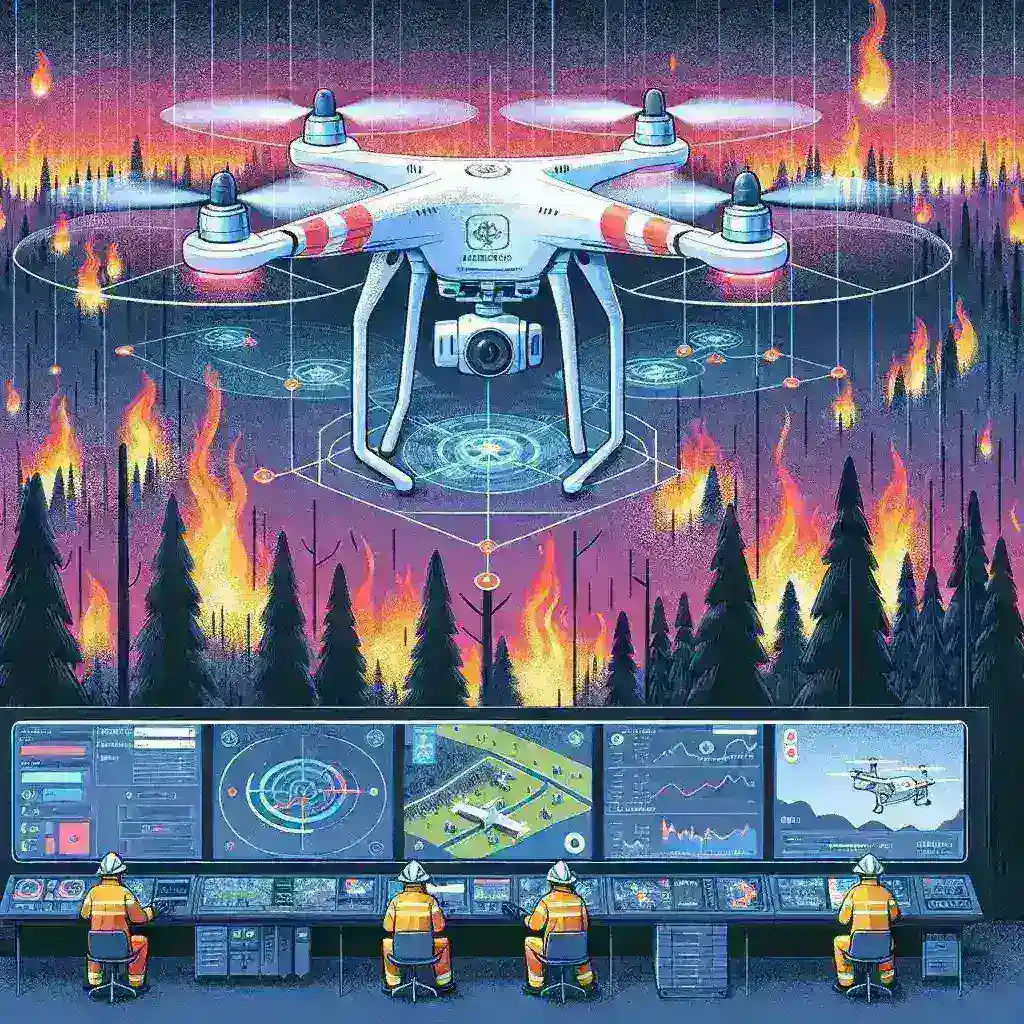Robotic Drones Powered by AI Assisting Wildfire Control with Predictive Path Mapping
Robotic Drones Powered by AI Assisting Wildfire Control with Predictive Path Mapping
In recent years, the rise of artificial intelligence (AI) has transformed numerous industries, and wildfire management is no exception. As wildfires become more frequent and devastating due to climate change, the need for innovative solutions has never been more critical. Robotic drones powered by AI are emerging as pivotal tools in assisting wildfire control, particularly through predictive path mapping techniques.
The Growing Challenge of Wildfires
Wildfires pose a significant threat to ecosystems, human life, and property. According to the National Interagency Fire Center, the United States has witnessed a dramatic increase in the frequency and intensity of wildfires over the last few decades. In 2020 alone, over 58,000 wildfires burned approximately 10.1 million acres across the country. This alarming trend underscores the urgent need for effective wildfire management strategies.
Understanding AI in Firefighting
Artificial intelligence involves the simulation of human intelligence processes by machines, particularly computer systems. In the context of wildfire control, AI can analyze vast amounts of data from various sources, enabling better decision-making and resource allocation. This capability is crucial when facing the unpredictable nature of wildfires.
What are Robotic Drones?
Robotic drones, or unmanned aerial vehicles (UAVs), are aircraft operated remotely or autonomously. Equipped with advanced sensors, cameras, and GPS technology, these drones can perform a variety of tasks, from surveillance to data collection. In the realm of wildfire management, they provide a unique advantage by accessing hard-to-reach areas while providing real-time information.
Predictive Path Mapping Explained
Predictive path mapping is a technique that utilizes AI algorithms to forecast the potential spread of wildfires. By analyzing data such as topography, weather conditions, and vegetation types, these algorithms can generate models that predict the fire’s movement and intensity. The integration of this mapping technology with robotic drones allows for proactive wildfire management.
How Robotic Drones Utilize Predictive Path Mapping
- Real-time Data Collection: Drones can quickly gather data from the field, including thermal imaging and aerial photography, allowing for accurate assessments of the fire’s current state.
- Dynamic Mapping: AI can process data in real-time to update predictive models, enabling firefighting teams to adapt their strategies based on the latest information.
- Resource Allocation: By understanding the predicted path of the fire, firefighting resources can be deployed more effectively, prioritizing areas at greater risk.
Case Studies: Success in Action
Several successful implementations of AI-powered drones in wildfire management have occurred globally. For instance, during the 2021 California wildfires, drones equipped with AI technology were deployed to monitor fire behavior. This technology provided critical data that aided firefighters in making informed decisions, ultimately saving lives and property.
A Look at Australia
Australia, frequently plagued by devastating bushfires, has also turned to technology for assistance. In 2020, researchers utilized drones with AI capabilities to track fire movements more efficiently. The drones provided aerial footage and analyzed environmental conditions, which helped in formulating a more strategic response to the ongoing fires.
Advantages of Using AI-powered Drones
- Enhanced Situational Awareness: Drones provide a bird’s-eye view of the wildfire, allowing for better understanding and analysis of the situation.
- Improved Safety: By employing drones, firefighters can assess dangerous areas without putting personnel at risk.
- Cost-effectiveness: The use of drones can reduce operational costs associated with traditional firefighting methods.
Challenges and Limitations
Despite the benefits, there are challenges associated with the use of robotic drones in wildfire management. Weather conditions, such as high winds or heavy smoke, can affect drone performance. Additionally, the initial investment in technology and training can be significant.
Future Predictions: The Evolution of Wildfire Management
The integration of AI-powered drones in wildfire management is still in its infancy, but the future looks promising. As technology continues to advance, we can expect:
- Improved AI Algorithms: Enhanced algorithms will lead to more accurate predictive models.
- Increased Autonomy: Future drones may operate with even greater autonomy, allowing for faster response times.
- Wider Adoption: As success stories proliferate, more regions may adopt this technology, leading to collaborative firefighting efforts on a global scale.
Conclusion
Robotic drones powered by AI, equipped with predictive path mapping capabilities, are revolutionizing how we approach wildfire control. By improving situational awareness, enhancing safety, and optimizing resource allocation, these drones represent a significant advancement in firefighting technology. While challenges remain, the potential to save lives and protect ecosystems is immense. As we continue to face the growing threat of wildfires, embracing innovative solutions like AI-powered drones will be crucial in safeguarding our environment for future generations.

